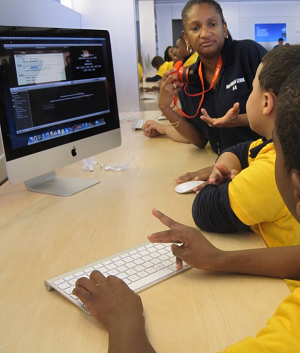The Bill & Melinda Gates Foundation put two stakes in the ground last week in support of next-generation digital learning: one in the postsecondary school space and another in secondary schools.
Looking to boost the numbers of students attaining a high-quality and affordable postsecondary credential, the Foundation announced $9 million worth of grants to support innovators inside and outside of the postsecondary establishment.
In secondary schools, the Foundation gave $1.2 million to the Next Generation Learning Challenges (NGLC) for its Wave III effort to fund secondary schools that use blended learning to support personalized learning for students at an affordable price that is scalable ($3.3 million of the $9 million for postsecondary actually went to NGLC as well to fund four breakthrough postsecondary models).
In my travels and conversations with people from around the country, I’m often struck by how much more K-12 public schools are seizing online learning to transform education than most people realize—or than I think statistics would even capture.
As a reviewer for the NGLC secondary school models, which seeks to not just fund those schools using online learning but those really taking their approach the extra mile with innovative, push-the-envelope student-centric designs, I have been struck further by how much blended learning has arrived. We reviewed exciting applications from charters and districts whose leaders were truly thinking outside the box in different ways. In their applications, there was an emerging familiarity with using a common language to talk about blended learning, which, given our work in defining different blended-learning models, is gratifying to see. As Andy Calkins, deputy director of NGLC said in an email to me, “These attributes [of blended learning] are starting to be commonly understood to be the hallmarks of next generation learning, at least among those keeping their eye on trends in the unfolding future of K-12 education.”
What will now be most interesting of course is seeing the actual execution of these schools’ plans—as always, the devil is in the details in education. Some of these school models open up this fall while others will open in the fall of 2013. Another question is if these models can scale. Calkins suggests that more thought and creativity is still needed here. The applicants are, in his words, creating great working models of blended learning 2.0 schools, but NGLC is more than just about creating a series of proof points, as it is focused on helping the models it funds scale aggressively.
Stay tuned to the grant winners: Academy 21 at Franklin Central Supervisory Union in Vermont, which is focused on a high-need, predominantly rural community; Cornerstone Charter Schools in Michigan, which seeks to prepare Detroit students for college and health-focused careers; Da Vinci Schools in California, which will integrate blended learning, early college, and real-world experiences with its existing project-based learning approach; Education Achievement Authority in Michigan, which, as part of the statewide turnaround authority is trying to create a student-centric system for students in Detroit; Match Education in Massachusetts, which already operates high-performing schools in Boston and will now focus on using technology to increase the effectiveness of its one-on-one tutoring; Schools for the Future in Michigan, which will serve students significantly below grade level; Summit Public Schools in California, which aims to build off its experiments in blended-learning models to launch a competency-based school; and Venture Academies in Minnesota, which is a new charter organization that will focus on accelerated college credit attainment and cultivation of entrepreneurial leadership.
In the postsecondary space, the Gates Foundation made a number of grants—both directly and through NGLC—to intriguing ventures with the potential to improve education dramatically, including some of my disruptive favorites: start-up MyCollege Foundation, which will establish a non-profit college that blends adaptive online learning solutions with other services at a low cost; University of the People, the world’s first tuition-free, non-profit, online academic institution dedicated to opening access to higher education globally; New Charter University, a competency-based university that charges only $199 per month for students seeking a degree and for which NGLC will fund a research study of its online students and a comparative one of students enrolled in a blended-learning environment delivered through a partnership with the Community College of the District of Columbia; Southern New Hampshire University, which under its President Paul LeBlanc has already created an autonomous online division and will now pioneer the “Pathways Project,” which will offer a self-paced and student-centric associates degree; and MIT, which will use the funds to create a free prototype computer science online course for edX.
As with the secondary-school models, the proof in many of these cases is yet to come, but it is exciting to see a foundation step up and take some risks to reinvent learning to create dramatically better and lower-cost learning experiences for all students.
This blog entry originally appeared on Forbes.com





